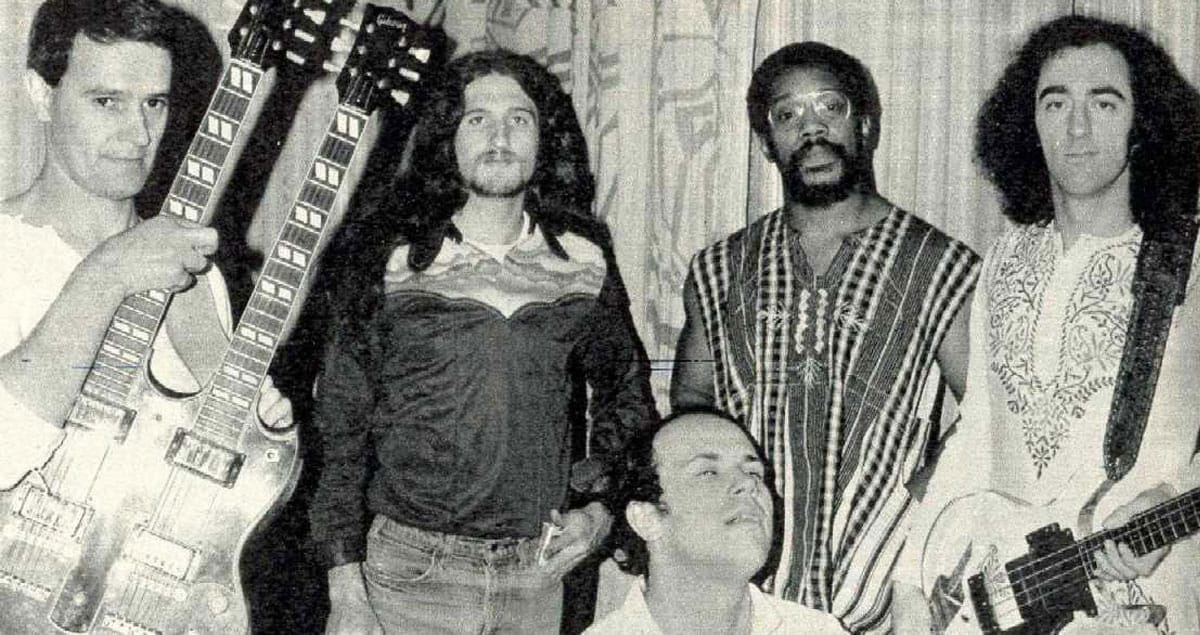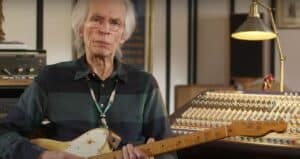Mahavishnu Orchestra: Pioneers of Jazz Fusion and Progressive Jazz-Rock
Mahavishnu Orchestra was an American jazz fusion band led by legendary guitarist John McLaughlin. Formed in 1971, the band is known for its complex compositions, virtuosic musicianship, and innovative blend of jazz, rock, Indian classical music, and funk. The Mahavishnu Orchestra revolutionized the jazz fusion genre, setting new standards for musicianship and technical proficiency.
1. Formation and Early Years (1971-1972)
1.1 The Formation of Mahavishnu Orchestra
- The Mahavishnu Orchestra was formed by John McLaughlin after his experiences playing with legendary jazz musicians like Miles Davis. Inspired by Indian classical music, McLaughlin sought to combine the improvisational nature of jazz with the rhythmic and melodic elements of Indian music, as well as rock’s energy and aggression.
- The original lineup included John McLaughlin (guitar), Billy Cobham (drums), Jan Hammer (keyboards), Rick Laird (bass), and Jerry Goodman (violin). This highly talented ensemble helped create the band’s groundbreaking sound.
1.2 The Inner Mounting Flame (1971) – A Groundbreaking Debut
- Released in 1971, The Inner Mounting Flame (1971) is widely regarded as one of the most influential albums in the history of jazz fusion. It showcased the band’s explosive combination of complex time signatures, virtuosic solos, and Eastern influences.
- The album drew heavily from Indian classical music and rock, blending fusion jazz with fast tempos and intense improvisation. The track Meeting of the Spirits is a perfect example of the band’s intense and dynamic approach to jazz fusion.
- Key Tracks:
- Meeting of the Spirits
- The Dance of Maya
- You Know, You Know
2. Success and Evolution (1973-1974)
2.1 Birds of Fire (1973) – Expanding the Sound
- Released in 1973, Birds of Fire (1973) is the band’s second album and one of the most revered in the jazz fusion genre. This album further explored the fusion of jazz, rock, and Indian music, while also introducing elements of Western classical music and electric experimentation.
- The album includes standout tracks like Birds of Fire and Miles Beyond, both of which are still considered some of the band’s finest compositions. The ensemble’s virtuosity and ability to seamlessly merge complex jazz harmonies with rock energy were fully realized here.
- Key Tracks:
- Birds of Fire
- Miles Beyond
- One Word
2.2 The Band’s Signature Sound
- By this point, Mahavishnu Orchestra had established their signature style: blazing fast tempos, polyrhythmic drumming, virtuosic solos, and fusion melodies blending Eastern and Western music.
- McLaughlin’s guitar work was central to the band’s sound, using wide intervals and complex time signatures to create intricate, yet explosive, compositions. The band also used electric violin (Jerry Goodman) and keyboard synthesizers (Jan Hammer) to create a dynamic and otherworldly sound.
3. Lineup Changes and Musical Shifts (1974-1975)
3.1 Apocalypse (1974) – A Shift Toward Orchestration
- In 1974, Mahavishnu Orchestra released Apocalypse (1974), which marked a departure from the earlier, more intense fusion style towards a more orchestrated sound. This album featured a 40-piece orchestra, blending the band’s jazz fusion with a classical symphonic structure.
- This was the final album with the classic lineup of the Mahavishnu Orchestra. It showcased McLaughlin’s deepening interest in Indian music and spirituality, with the album’s themes drawing heavily from Eastern philosophies.
- Key Tracks:
- Vision Is a Naked Sword
- A Lotus on Irish Streams
- The Noonward Race
3.2 Band Breakup and McLaughlin’s Pursuit of Other Projects
- Following Apocalypse and some internal tensions, the classic Mahavishnu Orchestra lineup disbanded in 1974. McLaughlin briefly continued the Mahavishnu Orchestra under different formations, but the magic of the original lineup was never fully replicated.
- McLaughlin began exploring new projects, including his Shakti ensemble, which focused more on Indian classical music and less on the fusion of jazz and rock.
4. The Return and Later Years (1980s-1990s)
4.1 Mahavishnu Orchestra: The Lost Trident Sessions (1980s) – Rediscovery of Unreleased Material
- In the 1980s, previously unreleased material from the classic Mahavishnu Orchestra lineup was discovered and released as The Lost Trident Sessions (1980s). These recordings offered a glimpse of what could have been had the band stayed together longer.
- These sessions were a mix of unreleased tracks from the classic albums Birds of Fire and Apocalypse and showcased the band’s evolving sound.
- Key Tracks:
- The Lost Trident
- Open Your Eyes
4.2 Reviving Mahavishnu Orchestra (1990s)
- Over the next decades, McLaughlin attempted to revive the spirit of Mahavishnu Orchestra through several different versions of the band, though none of these iterations captured the same magic as the original.
- Despite the lineup changes, McLaughlin continued to perform the band’s classic material, introducing it to new generations of listeners.
5. Legacy and Influence
5.1 A Landmark in Jazz Fusion
- The Mahavishnu Orchestra is widely regarded as one of the most important and influential bands in the history of jazz fusion. Their pioneering mix of rock, jazz, and Indian classical music helped lay the groundwork for future jazz fusion bands like Weather Report, Return to Forever, and The Pat Metheny Group.
- McLaughlin’s virtuosic guitar playing, combined with complex compositions and innovative arrangements, set a new standard for musicianship in jazz and rock alike.
5.2 Influence on Future Generations
- The Mahavishnu Orchestra’s sound influenced countless musicians, both within jazz and beyond. Their virtuosity and technical complexity have had a lasting impact on the evolution of rock, jazz fusion, and even metal.
- Their dynamic and improvisational performances, as well as their blending of cultural music traditions, are regarded as revolutionary.
6. Mahavishnu Orchestra’s Discography Overview
Studio Albums:
- The Inner Mounting Flame (1971)
- Birds of Fire (1973)
- Apocalypse (1974)
Live Albums:
- Between Nothingness and Eternity (1973)
- The Lost Trident Sessions (1980s)
- Live at the Fillmore East 1973 (1997)
7. Conclusion: The Lasting Impact of Mahavishnu Orchestra
Mahavishnu Orchestra’s combination of explosive improvisation, complex rhythms, and melodic innovation continues to influence and inspire musicians across genres. Their groundbreaking music pushed the boundaries of jazz, rock, and fusion, and their legacy as one of the most innovative and virtuosic ensembles in music history remains unmatched.




